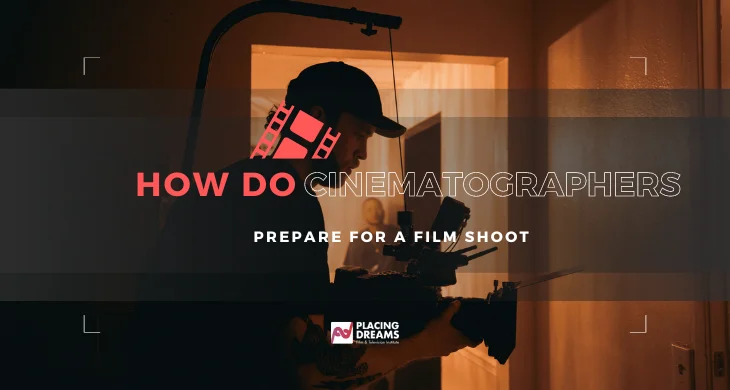Cinematographers basically bring the director’s creative vision into the screen. Their ability to manage camera movement, lighting, and framing instigates the atmosphere and the visual style of a movie. Here is a complete look at how cinematographers from Placing Dreams Film & Television Institute prepare for a film shoot.
1. Script Analysis and Conceptualization
Before any cameras roll, cinematographers go deep into the script. They read the story, the characters, and themes to understand what makes a scene emotionally attached. The analysis gives them an idea of how the narrative is to be interpreted visually.
2. Collaborating with the Director
Making movies is all about collaboration with the director. The director and cinematographer will work together on the visual aspect of the movie. They will talk about camera actions, lighting programs, and shoot design in an effort to make nearly every shot fit the story’s intent.
3. Location Scouting and Pre-Visualization
Once the visual approach is decided, the cinematographer scouts locations with the director and production team to check out the location. They emendate onto regarding natural light available, spatial constraints, and aesthetic suitability for each scene. A storyboard or digital simulation can be used to pre-visualize camera angles and movements.
4. Equipment and Technical Planning
At Placing Dreams, cinematographers receive training on operating all types of equipment, from traditional film cameras to the most advanced digital set-ups. They put in their great effort to ensure precise camera placing, choosing the lens and exposure setup according to the storyboard and the vision of the director.
5. Lighting Design and Setup
Lighting is an integral part of cinematography. The cinematographer basically designs lighting in a way that the lighting patterns support the feeling of the scene. They use many techniques to create the intended effect through natural and artificial light, diffusers, and gels.
6. Rehearsal and Blocking Order
Before filming, cinematographers participate in rehearsals with actors and the production team. They finalize camera blocking—deciding upon where the camera will go or how it will move during the course of the scene—to best capture the action and emotion.
7. Adaptability and Troubleshooting on Set
During a shoot, cinematographers have to be flexible. They change lighting setups due to changes in the weather, fix technical problems with the equipment, and consult with other crew members on continuity and visual flow.
8. Evaluation after the Shoot and Feedback
After finishing shooting, the cinematographer watched the clips along with the director and editor. They examine the frame composition of individual shots, the quality of light, and the finish or overall visual consistency—to ascertain that the desired narrative effect is communicationally realized.
Wrapping up
In this way, the Cinematography course at Placing Dreams Film & Television Institute connects theory to practice. The student who participates in workshops, gets valuable industry insights, and mentorship from veteran professionals—and that is how one masters both the artistic and technical aspects of cinematography. The aspiring cinematographer learns to apply the acquired skills and confidence when working on feature films, documentaries, or commercials in this rather competitive world of filmmaking.
Placing Dreams Film & Television Institute offers an environment for aspiring filmmakers to capture stories through the lens,and explore their passions and grow their career as cinematographers. This blog highlights the key steps cinematographers take to prepare for a film shoot and how Placing Dreams Film & Television Institute supports aspiring talents in their journey.
FAQ’s
Que: What does a cinematographer do in preproduction?
Ans: In preproduction cinematographer will work directly with the director to help them create the visual spoken language, or “look,” of the film. It will include picking out the best camera, lenses, and lighting configurations for the narrative as well as dissecting the screenplay creatively.
Que: Is a DOP the same as a cinematographer?
Ans: The cinematographer, sometimes known as the director of photography (DP OR DOP), is in responsible for shooting a film, television program, music video, or other live-action work.
Que: Which institute is best for cinematography?
Ans: Placing Dreams Film & Television Institute offers the best cinematography courses in Mumbai. Students will get to participate in seminars, workshops, gain insightful knowledge about the film industry, and get tips from industry experienced veterans.
Que: How do cinematographers decide for the shooting location?
Ans: Before shooting a film it is important to understand the script, as some parts might impact the way you use your location. The director and cinematographer often go through the actors’ set to determine the best location for the actors and where to locate the camera.

